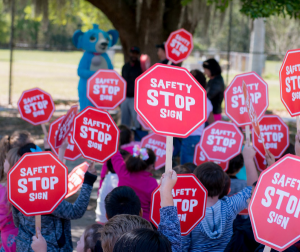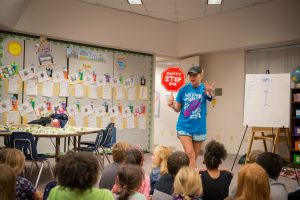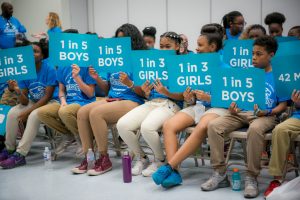Child Safety
Become a Safer, Smarter Family This Holiday Season with These Tips

The holidays are an especially magical time to be a kid. Decorations, food, traditions, and time off from school…what’s not to love!? But in the midst of the merriment that the holidays bring, it’s important for parents to stay vigilant and realize that these times of added hustle, bustle, and houseguests can also be a potentially unsafe time for children. Unfortunately, the extra activities and people surrounding the holidays bring an increased risk of all types of child abuse and can potentially jeopardize children’s safety.
Disclaimer: I know this topic doesn’t exactly get parents into the holiday spirit, but considering the fact that 90 percent of child abuse is committed by someone the child and their family knows and trusts, we can’t afford NOT to talk about it. The holiday season invites many relatives, friends, and neighbors into the home, which sadly offers increased opportunities for predators to gain access to children, and for perpetrators to come into contact with their victim. The sad reality is one in three girls and one in five boys will become victims of child sexual abuse before age 18. But, here’s the good news: 95 percent of child sexual abuse is preventable through education and awareness.

Although it’s critically important to educate our children about consent and body boundaries, this conversation doesn’t have to be scary – it IS possible to talk about personal safety from a place of empowerment and fun, not fear! Whether your child is five or 15, it’s never too early – or late – to start a dialogue about body boundaries and the importance of consent. Before the holiday chaos sets in, take some time to refresh your family on the basics.
First, remind your child they do not owe anyone a hug or kiss if they are uncomfortable – even family members. Your child’s body belongs to them, and only they have the power to determine how a certain touch makes them feel. From there, segue into some fun, educational activities to illustrate personal safety strategies. Here are a few examples:
- Teach your child that their body is special and belongs only to THEM. Discuss body boundaries: the space around our bodies that is personal, and that no one should touch without permission. Only your child has the power to accept a wanted touch, and they have every right to say no to a touch they do not want to receive…even if it seems harmless to you. That means accepting a high five, handshake, fist bump, or simply “hello” instead of a kiss or hug from family members if it’s what your child wants.
- Discuss safe and unsafe touches. Safe touches make us feel happy, loved, and are welcomed. Unsafe touches make us feel hurt, sad, confused, or not quite right.

Photo Courtesy of Lauren’s Kids - Create a Trusted Triangle of three “grown-up buddies” your child can talk to about anything – from a fight with a friend to a bad dream, or a touch that doesn’t feel safe.
- Brainstorm the difference between safe and unsafe secrets. Safe secrets make you feel happy, and unsafe secrets make you feel confused, icky, or scared. Make sure your child knows an adult should never ask a child to keep a secret unless it’s something that will make everyone smile, like a surprise party.
- Practice using your “I Mean Business” voice: loudly, clearly and confidently saying “Stop! That’s not safe!” in any situation that makes your child feel uncomfortable, unsafe, or not quite right.
- With older children, discuss common “grooming” tactics used by predators and talk about how your child would think, feel and act in each situation.

You can find all of these activities and more by visiting www.safersmarterfamilies.org and creating a FREE personalized Family Safety Plan, customized based on your child’s age. Parents should also read up on the warning signs of potential abuse, such as a child not wanting to be around a particular adult.
In between holiday crafts and parties, reinforce some of these strategies with your child and create an ongoing dialogue about boundaries and consent. Together, we can all become Safer, Smarter Families as 2018 draws to a close. For more child sexual abuse prevention resources, visit www.laurenskids.org. And, from my family to yours, Happy Holidays!
